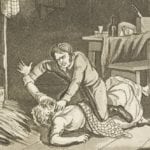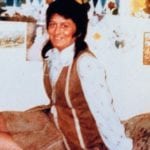 Humans
Humans  Humans
Humans  Animals
Animals 10 Animals That Humiliated and Harmed Historical Leaders
 History
History 10 Most Influential Protests in Modern History
 Creepy
Creepy 10 More Representations of Death from Myth, Legend, and Folktale
 Technology
Technology 10 Scientific Breakthroughs of 2025 That’ll Change Everything
 Our World
Our World 10 Ways Icelandic Culture Makes Other Countries Look Boring
 Misconceptions
Misconceptions 10 Common Misconceptions About the Victorian Era
 Mysteries
Mysteries 10 Strange Unexplained Mysteries of 2025
 Miscellaneous
Miscellaneous 10 of History’s Most Bell-Ringing Finishing Moves
 History
History 10 Great Escapes That Ended Right Back in Captivity
 Humans
Humans 10 Everyday Human Behaviors That Are Actually Survival Instincts
 Animals
Animals 10 Animals That Humiliated and Harmed Historical Leaders
 History
History 10 Most Influential Protests in Modern History
Who's Behind Listverse?

Jamie Frater
Head Editor
Jamie founded Listverse due to an insatiable desire to share fascinating, obscure, and bizarre facts. He has been a guest speaker on numerous national radio and television stations and is a five time published author.
More About Us Creepy
Creepy 10 More Representations of Death from Myth, Legend, and Folktale
 Technology
Technology 10 Scientific Breakthroughs of 2025 That’ll Change Everything
 Our World
Our World 10 Ways Icelandic Culture Makes Other Countries Look Boring
 Misconceptions
Misconceptions 10 Common Misconceptions About the Victorian Era
 Mysteries
Mysteries 10 Strange Unexplained Mysteries of 2025
 Miscellaneous
Miscellaneous 10 of History’s Most Bell-Ringing Finishing Moves
 History
History 10 Great Escapes That Ended Right Back in Captivity
10 Key Differences Between Organized And Disorganized Serial Killers
Every serial killer leaves behind several clues to their personality at each crime scene. Where they choose to commit the crime, the selected weapon, and how they later dispose of the body will unwittingly reveal who they really are.
When Netflix released its hit show ‘Mindhunter’, a new obsession with serial killers was reborn. Throughout the series; FBI profilers Holden Ford (based on former FBI agent John Douglas) and Bill Tench (based on Robert Ressler) establish the Behavioral Science Unit in Quantico, Virginia, where they develop unheard of criminal profiling techniques.
In reality, FBI profiler Roy Hazelwood created a theory that serial killers could be categorized as either organized/disorganized. This theory was based on the extensive interviews conducted by Douglas and Ressler who profiled some of the world’s most notorious serial killers including David Berkowitz, Ted Bundy, John Wayne Gacy, Ed Kemper, and Gary Ridgway
The following are the key differences between organized and disorganized serial killers.
Top 10 Creepy Childhood Stories Of Serial Killers
10 Organized Serial Killers Are Often Married And Have A Family
Organized serial killers John Wayne Gacy, Dennis Rader, Gary Ridgway, and Joseph James DeAngelo all were married at either the time of the murders or before. They convinced their doting wives that the reason they were out so late at night was either for work or traveling on business, yet in reality, they were stalking and butchering their victims.
It is even more frightening then to imagine once they have dumped the body, these serial killers return home and enjoy meals with the family—everyone who surrounds them is completely unaware of their sinister crimes.
Rader—also known as ‘BTK’ for his twisted method of ‘Bind, Torture and Kill’—was arrested in 2005 for the murders of 10 people. His daughter Kerri Rawson told ’20/20’, “I’m a crime victim from before I was born. I was born in ’78. My dad murdered a young woman when my mom was three months pregnant with me. So that makes me a crime victim because you’re living with a criminal.”
9 Disorganized Serial Killers Are Usually Under The Influence Of Drugs Or Alcohol
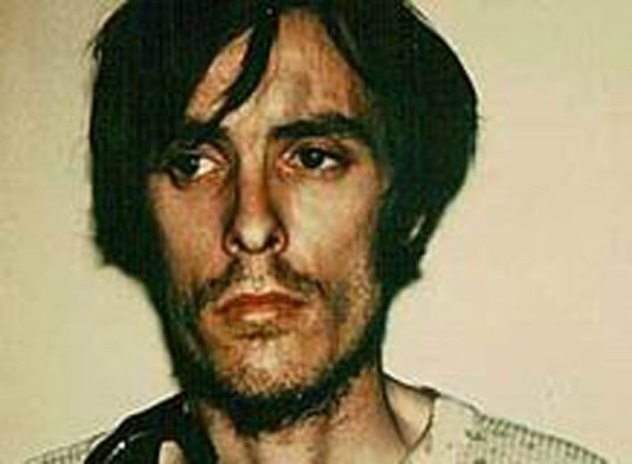
A textbook example of a disorganized serial killer would be Richard Chase. Between 1977 to 1978, Chase claimed the lives of six known victims; he also drank their blood and cannibalized the remains. He later became known as ‘The Vampire of Sacramento’.
Chase first started abusing drugs and alcohol from a very young age. He smoked marijuana, used LSD, and consumed so much alcohol that he developed hypochondria and told doctors his heart stopped beating because his pulmonary artery had been stolen. Another of his delusional claims was that his blood was turning to powder.
Unlike organized serial killers, disorganized serial killers are also incapable of maintaining social relationships and tend to drift between temporary homes as they make the worst type of roommate.
Chase was eventually caught when a woman he went to high school with noticed him approached her car with bloodstains on his shirt. When they checked out his apartment, authorities discovered three blenders containing blood and a refrigerator containing body parts. He pleaded not guilty by reason of insanity.
8 Organized Serial Killers Stalk Their Victims Beforehand
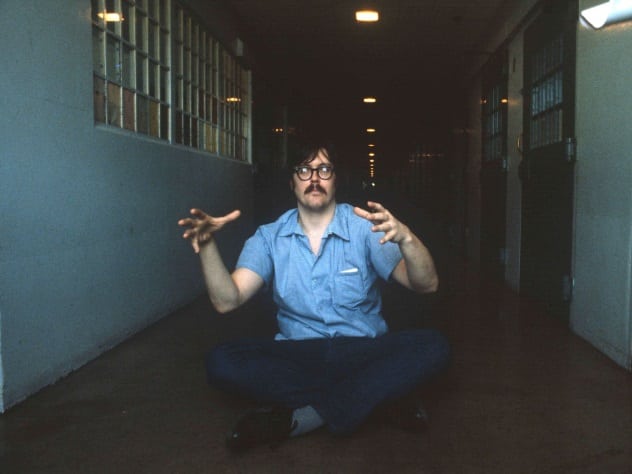
Organized serial killers nearly always have a plan. Even if that plan is vague, for example, in the words of Ed Kemper, “The first good-looking girl I see tonight is going to die.” These types of serial killers have a picture in mind of the ‘perfect murder’ that fits their sordid fantasies and they often watch their victims in advance to see who will fit the role. This is known as the ‘trolling phase’ and can go on for hours, days or even months.
The Golden State Killer/East Area Rapist—recently identified as Joseph James DeAngelo—terrorized the suburbs of Sacramento and around certain areas of Los Angeles. He stalked his victims, watching their homes that would often back onto river levees which were clearly his preferred terrain.
Each time, the fantasy is not properly fulfilled which results in an anti-climax that leads to a depression phase. Then they continue the cycle of hunting for a new victim again and again.
7 Disorganized Serial Killers Won’t Hide The Body
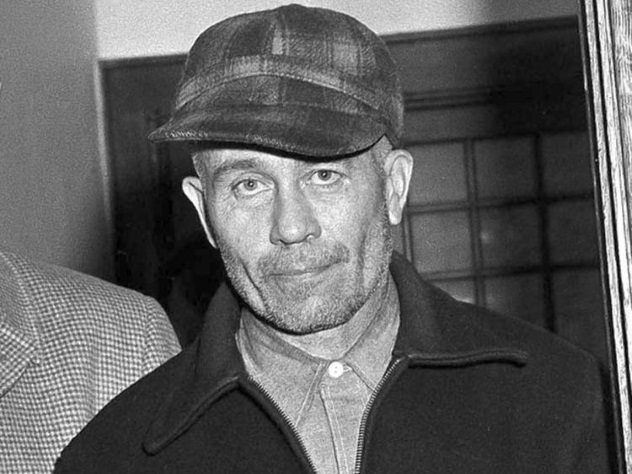
Priority number one for any organized serial killer after a murder is to hide the body. However, for disorganized serial killers, this does not rank as highly on their to-do list, if at all. Organized serial killers are known to operate at three separate crime scenes: where they first meet the victim, where they take the victim to the kill site, and then where they dispose of the bodies. Disorganized serial killers will typically kill the victim where they found them.
In 1957, Sheriff Arthur Schley arrived at a Wisconsin farmhouse to question 51-year-old Ed Gein if he had seen anything suspicious as he was the last person to visit the store of shopkeeper Bernice Worden. Schley found Worden’s beheaded and disemboweled body hung upside down from a ceiling beam in the kitchen.
Typical of a disorganized serial killer; Gein lived alone, he was socially incompetent, he depersonalized the victims (to say the least), and had suffered harsh discipline as a child.
6 Organized Serial Killers Keep ‘Trophies’
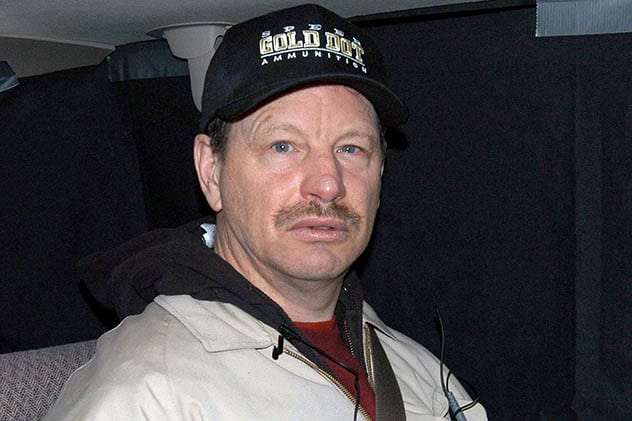
Organized serial killers like to take trophies and souvenirs from their victims. These twisted mementos assist them in reliving the fantasy time after time again.
Jerome ‘The Shoe Fetish Slayer’ Brudos kept the feet, Charles ‘The Eyeball Killer’ Albright kept—you guessed it—the eyes and Ukrainian serial killer Anatoly Onoprienko kept his victim’s underwear. In 2018, detectives recovered items from Joseph DeAngelo’s home belonging to his victims including cuff links and necklaces with heart-shaped pendants.
Gary ‘Green River Killer’ Ridgway claimed to have killed 60 women but there was only enough evidence to tie him to 49 murders. Ridgway would take jewellery from his victims and leave these in truck stop bathrooms for another person to find—he gained a sinister thrill from watching someone leave the bathroom whilst holding the item.
For many serial killers, they will also follow the newspapers reporting on their crimes very closely and add the clippings to their collection. When detectives are searching a serial killer’s home for evidence, typically, they will find a lot of articles relating to the homicides.
Top 10 Gruesome Ways Serial Killers Disposed Of Their Victims
5 Disorganized Serial Killers Show Signs Of Overkill
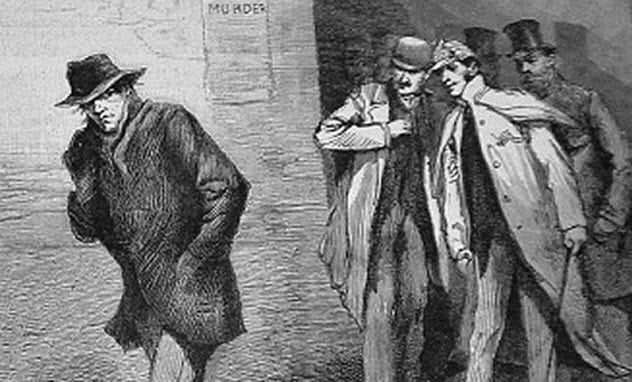
Skilled investigators are able to arrive at a crime scene and determine if the serial killer is organized or disorganized by looking at how the victim was killed. The use of excessive force is one of the major clues this is the work of a deviant disorganized killer.
Author of ‘Wicked Deeds’, Scott A. Bonn, explained, “Significantly, disorganized killers will often ‘blitz’ their victims—that is, use sudden and overwhelming force to assault them. The victim’s body is usually left where the attack took place and the killer makes no attempt to hide it. Jack the Ripper is a classic example of the disorganized serial killer.”
So, despite being considered one of the most devious serial killers of the 19th century; Jack the Ripper was more of an opportunity seeker than a criminal mastermind. He would target victims because they were readily accessible during the early hours of the morning.
4 Organized Serial Killers Usually Have A Kill Kit
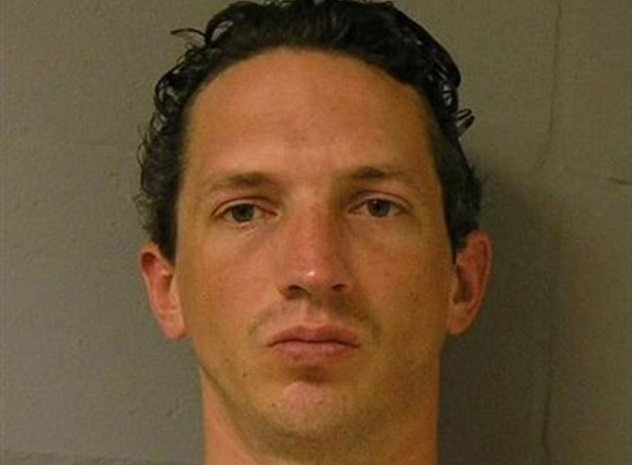
Many of the most organized serial killers will carry a kill kit they have prepared beforehand. Serial killer Israel Keyes is believed to have murdered more than eight victims—although only three could be confirmed. He was eventually caught when he used a credit card at an ATM that belonged to an 18-year-old woman he had killed and dismembered.
Keyes confessed to law enforcement that he would stash his kill kit near his intended crime scene which helped prove all of his murders were pre-mediated. Former FBI Special Agent Bobby Chacon told ‘Method of a Serial Killer’, “Israel Keyes was one of the most meticulous serial killers that I’ve ever come across or even heard of. And one of the reasons is these kill kits or caches of gears that he had stashed away.”
Forensic psychologist Dr. Thomas Powell added, “This ability to delay gratification—to have a kill kit and not act on it—was very atypical. You don’t see that kind of patience in people who do this sort of thing. He probably waited with a great deal of excitement.”
Bundy, Rader, and DeAngelo also carried their own kill kits that included weapons, ropes, and masks.
3 Disorganized Serial Killers Live Near The Crime Scene
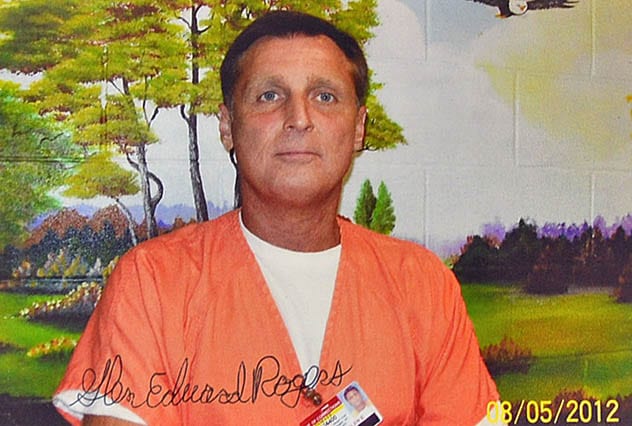
Organized serial killers will usually have access to a vehicle and even choose to travel across states to hunt for new victims. They will typically kill miles away from their own home.
Glen Edward Rogers, also known as the ‘Cross Country Killer’, killed victims in California, Florida, Mississippi, Ohio, and Louisiana. There are other possible cases in Kentucky that have possible links to him also. Yet, Rogers managed to avoid capture for so long as nobody suspected the guy with such a “friendly, persuasive, easygoing, generous” personality could really be a killer on the run.
Whereas a disorganized serial killer like Richard Chase, for example, resided within a mile of most of the murder sites. Also, Ed Gein’s farmhouse was close by where he killed Bernice Worden and local tavern owner Mary Hogan. This is also why disorganized serial killers are captured more quickly as they don’t have very far to run.
2 Organized Serial Killers Will Have A High IQ
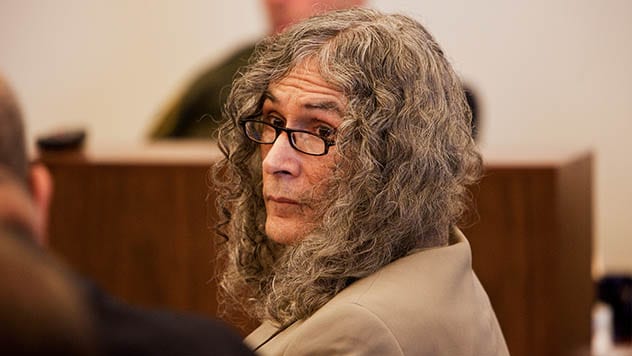
Serial killer Rodney Alcala is believed to have killed as many as 130 women and young girls between 1977 and 1979. Although he was sentenced to death in California for the murders of four victims, he still remains behind bars today. He was nicknamed ‘The Dating Game Killer’ after appearing on the popular game show in 1978 as Bachelor Number One in the middle of his murder spree.
Like many organized serial killers, Alcala has a high IQ—tests determine his IQ as 170. This is considered to be at a genius level matched with the minds of Stephen Hawking and Albert Einstein. Ed Kemper also possesses a high IQ of 145.
Yet, for these serial killers—they used their IQ for evil instead of good. Following his arrest, investigators discovered a locker containing more than a hundred photos of Alcala’s murder victims and many other women. Former Huntington Beach Police detective Steven Mack told VICE magazine “it’s highly likely” many of the unidentified women were his other victims.
1 Disorganized Serial Killers Are Unskilled Workers
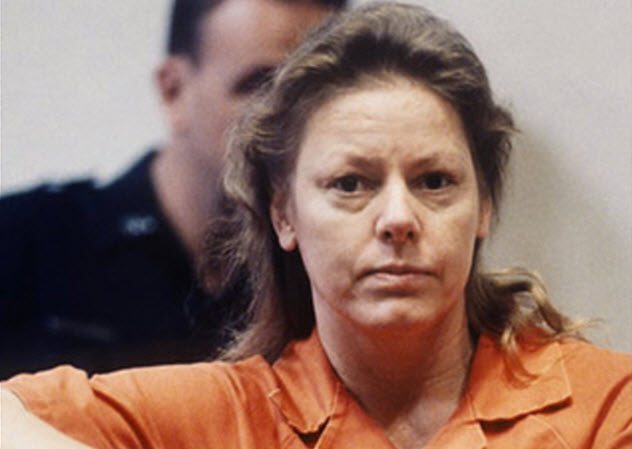
Disorganized serial killers are often unskilled workers or out of work. They will be found in positions that involve manual labor such as packager, assembler, or apprentice, or farmworker. Due to an overall lack of social understanding and their disorganized personalities, they won’t be able to keep a job for long and move around a lot.
Aileen Wuornos moved from Michigan to Flordia where she supported herself as a sex worker. Her criminal record included arrests for illegal possession of a firearm, forgery, assault, and robbery. She was known for her erratic and easily angered personality. From late 1989 through late 1990, she shot and killed seven middle-aged men claiming this was in self-defense.
She later stated, “People always look down their noses at hookers. Never give you a chance because they think you took the easy way out, when no one would imagine the willpower it took to do what we do, walking down the streets night after night, taking the hits and still getting back up.” She was executed for her crimes in 2002 aged 46.
Top 10 Sinister Tricks Serial Killers Used To Trap Their Victims


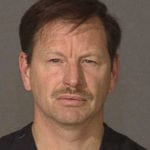
![10 Creepiest Photos Of Victims Taken By Serial Killers [DISTURBING] 10 Creepiest Photos Of Victims Taken By Serial Killers [DISTURBING]](https://listverse.com/wp-content/uploads/2018/09/Regina-Kay-Walters-featured-2-150x150.jpg)

